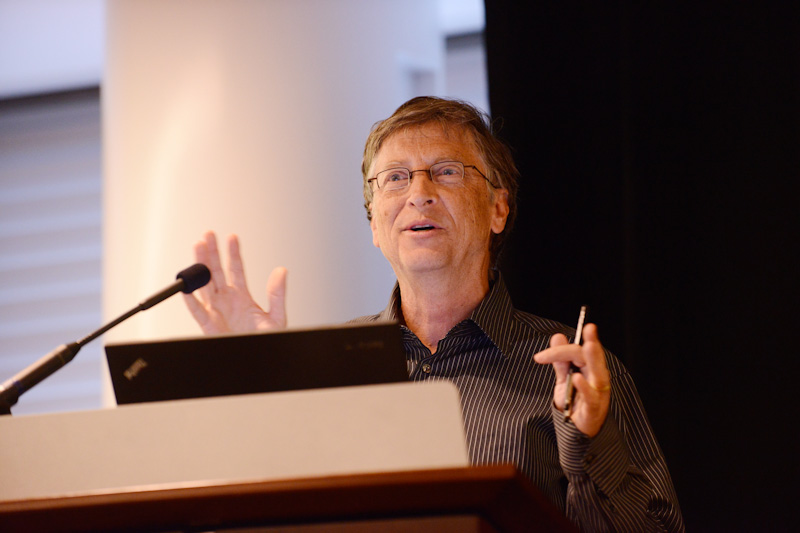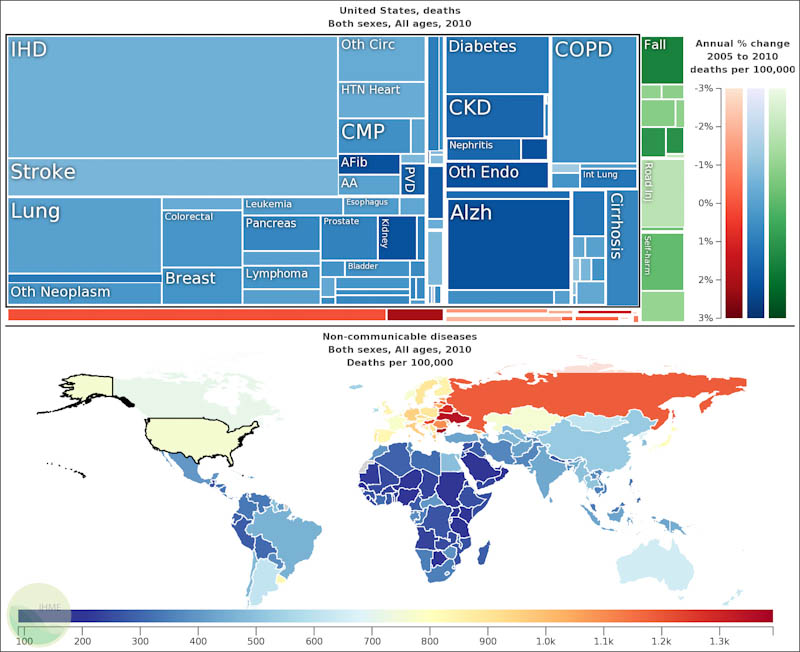 The same diseases that are the top killers in the US are now the leading causes of death worldwide as well. So is it a sign of progress or apocalypse?
The same diseases that are the top killers in the US are now the leading causes of death worldwide as well. So is it a sign of progress or apocalypse?
My heels echo on the blond floor as I skitter past blown up photos of smiling people from places like Nicaragua and Brooklyn. The Gates Foundation headquarters, with its curved glass and massive TV monitors always makes me feel a little like I’m in a spy novel or a political thriller. It’s got that “big things with global consequences happen here” vibe and today is no exception.
The Gates Foundation and researchers at the University of Washington are unveiling their Global Burden of Disease Study. The mammoth study includes a billion data points from all over the world, presented in a series of interactive info-graphics that slide between country, region, demographic and disease in sleek little modules.
It’s twenty years of data that, put bluntly, shows exactly what kills and disables us humans.
And in case you’re having a hard time conceiving of the scope of the data (as I was), Peter Speyer, Director of Data Development at the Institute for Health Metrics and Evaluation, puts it this way: “291 diseases times 187 countries, times 20 age groups, times 2 sexes, times 4 metrics…so yeah, the data set is gigantic.”
So what does this unprecedented study–which Bill Gates called, “one of the best efforts in data visualization” in the world–tell us about our collective well being?
Well, there are probably as many conclusions to draw as there are data points. Examples sited at the unveiling ranged from violence in Latin America to alcohol abuse in Russia.
But to me, the biggest takeaway is worldwide rise of non-communicable diseases.
When I think Global Health, I tend to think in terms of the big blockbuster diseases: Tuberculosis, HIV, and Malaria. But this study–along with others in recent years–reveals that diseases like diabetes, heart disease and cancer may be the biggest global concerns in the future.


The rise of non-communicable diseases is a trend in every country, says Ali Mokdad, who has a PhD in quantitative epidemiology and is a Professor of Global Health at the Institute for Health Metrics and Evaluation.
Mokdad cites longer life spans, success in controlling infectious diseases and increased “bad behaviors” (smoking, diet and inactivity) as the primary causes.
Everyone is careful to point out that communicable diseases are still a major health problem—HIV/AIDS jumped from the 35th cause of death globally to number 6 between 1990 and 2010—but it’s clear many people, especially in the developing world are suffering from diseases that don’t get much attention.
“You don’t have the drama of immediate death with these [non-communicable] diseases,” says Joanne Silberner, a veteran global health reporter (and my colleague at the University of Washington) who recently traveled to Cambodia to report on chronic, non-infectious diseases.
She says diseases that target adults, require complex treatments or are connected to lifestyle can be hard to rally around, and that raising awareness requires more than just, “holding up a picture of a child suffering from Malaria.”
“Infectious diseases have a ‘magic bullet,’” said Mokdad via email, “We can vaccinate a child and he or she will not get that disease. We do not have the same solutions for lifestyle.”
But Mokdad has a dire warning for donors wary of addressing lifestyle diseases, “A poor country that cannot treat …these conditions due to lack of funding, may see instabilities. Donors are aware of food riots or riots because of a hike in gas prices. Health riots will be more serious.”
From threats of protests demanding access to healthcare to the challenges of addressing “lifestyle,” choices, many of these new global health issues sound like they could be lifted directly from our own domestic healthcare debate.
Even the specific diseases in question, while often referencing the developing world, are diseases that can be found among my friends and family right here in the US.
I spent hours clicking through the report—contemplating how all those boxes, lines and circles dissolving and regrouping, represented actual sick people around the world—people who I might have more in common with than I realized.

